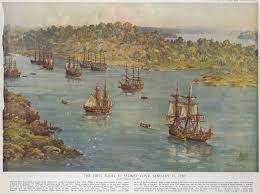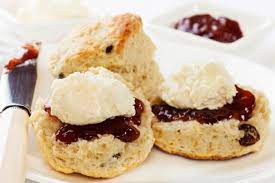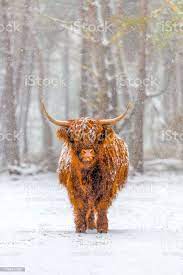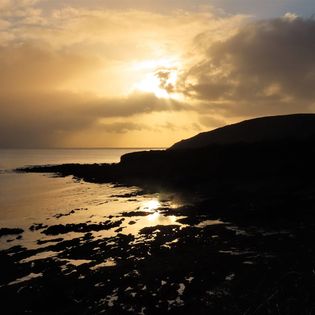Keen readers may have noticed that Sting was not mentioned in the last installment. This is because he was sulking in his house. His new song “Don’t Eat So Close to Me (when you’re scoffing a Cornish pasty)” had not gone down well with the party crowd. Instead, they insisted on cavorting around to the Helston Floral Dance, yes, the Terry Wogan version. It frankly, did his head in. Please, have some sympathy for Sting, it is not easy being an artist….
Monthly Archives: February 2022
A Party and a Plan
The piskies all went to Liskeard Station to greet Fraser who had come down on the Flying Scotsman sleeper train, changed stations in London from Kings Cross to Paddington (no easy feat even for a magical being, attended by a small Highland Cow, but he managed to hitch a ride on a friendly pigeon) and then enjoyed the services of the Great Western Railway down through Wiltshire and Devon and over the Tamar Bridge to enter the glorious Kingdom of Kernow.
They were all extremely surprised to see him alight with an igloo.
Once he had explained that he had thought they were going to Antartica on their adventure, not Australia, as planned, they agreed it would be useful to have a cold storage with them, and they could use it as a fridge.
Luckily for piskies, the houses they live in are as light as thistledown, and they do not ever fall apart.
That night, they had a most sensational party and hundreds of piskies came from all over the Duchy many of them draped in the Cornish flag or wearing Cornish tartan. There were willow lanterns in a grand parade, a performance of St Piran’s story and to round off the festivities they all joined in the Trelawny Shout.
Wesley Pascoe has been busy for days making enough Stargazy Pies to feed the crowds. For pudding they had saffron cakes with thunder and lightning. Queen Daphne was partial to a thimble of mead and others quaffed the cider that had been stored in barrels since the last wassailing. Everyone enjoyed themselves so much that they said it was better than Mazy Day and Christmas rolled into one!
If there’s one thing all piskies love to do, it is to sing and dance, and sing and dance they did until the moon had arched it’s way right over the night sky and the first chirrups of the dawn chorus were sounding from the hedgerows.
The motto of the piskies is Onen Hag Oll, meaning One and All in the old language of their kinfolk and they all said this to each other, as they slapped each other on the back, kissed their friends farewell, and skipped off into the morning light.
All except Fraser, who did not speak Cornish, and instead was muttering “Lang may yer lum reek” and “Haste Ye Back”, which are Scotttish ways of giving good wishes. Hamish MacSporran did not speak either Cornish or Scottish, but he did at times sound awfully like he was joining in with “Och Aye the Moo.”
Piskies sleep in the day, as we know, so the following night they finished off all the clearing up from the party then sat around the fire and started to plan their travel itinerary.
Piran had been doing some research, and he said that Queen Daphne was absolutely right when she noted that many ships came and went from Par harbour. That is, they used to. Back in 1956, 800 ships a year! Nowadays though, the giant clay pyramids stood watch over big storage sheds. The ships had all gone to the deeper waters of the Fowey Wharves.
“How splendid” remarked Queen Daphne “I can pop in to see my chum Foy Quiller-Couch if we are leaving from Fowey.”
Back in the olden days, ships built over the estuary at Polruan boatyard, like the famous schooner Jane Slade, carried cargo of lemons and raisins from the Mediterranean but the main cargo now was china clay. Lots of china clay was sent to other countries to make things like medicines, face creams, paint and plastics, but some ships came in from other countries too. “We can take one of these container ships back to Brazil” announced Piran, pleased with his discovery. Brazil is in South America and that will get us half way there”
You might be thinking, why are the piskies so intent on sailing all the way around the world? Why don’t they go on a big mechanical bird, an airyplane, like Theodore did when he returned to his home?
The reason for this is that piskies are not safe when they are in big crowds of humans. They can get trampled underfoot. This is why it was difficult for Fraser to get across London. An airport where airyplanes are parked and where the airyplanes take off and land would be a very busy place, with lots and lots of heavy humans In it, and it would be a very dangerous place for a small band of piskies, however brave and intrepid they were. Even Demelza, the bravest of them all, would not dare to set foot in an airport terminal.
Morwenna remembered that when Theodore was in Looe, he liked to watch out the window with coastguard, John Adams, for all the big ships going by on the horizon. “Theodore will be pleased we are travelling on the sea” she told the others. “He loves the ocean, and we will cross the two greatest oceans in the whole world, the Atlantic, and the Pacific, to get to him.”
Piran nodded. “Us Cornish have been emigrating over the water for hundreds of years. Some went on the convict ships in 1788 like Mary and William Bryant from Fowey. That poor girl was sent away for stealing a loaf of bread. Others went in search of gold, or a new life, when times were hard.”
The piskies fell into a somber mood and together they broke into a chorus of “Bound for Botany Bay” before they got up and went to settle into their cosy beds. They would need to be well rested and ready. Their voyage to the Antipodes would soon begin.
From Looe to Jamberoo
How some Cornish Piskies (and a Scottish Kelpie) ended up in the Southern Highlands of New South Wales
Once upon a time, a boy named Theodore came to stay with his Grandma in a fishing village, Looe in Cornwall. Cornwall is the Kingdom of Kernow at the bottom of another country called England. It points out into the sea and is famous for pirates, tin miners, pasties, and piskies; who are little people, a bit like fairies, only not necessarily as pretty and dainty. They cannot fly, but they have other magical qualities.
Theodore had come all the way from the other side of the World: Australia, on a great big mechanical bird called an airyplane. The Grandma’s house had a resident piskie, Morwenna. Here is a picture of her tiny abode in a tree stump in the garden. Morwenna was so excited to have Theodore visit, that she left him little gifts every morning outside her front door. Morwenna found human beings awfully fascinating and Theodore, in particular, to be an excellent example of a boy as he was smart and funny and kind.
You may have heard that piskies are always old and wrinkled and rather mischievous, trouble-causing even, but Morwenna was none of those things. Like all creatures, piskies have to begin being young, and she was a mere fledgling. Her hobby was to spy on people and could see them going about looking down all the time at these oblongs in their hands. She deducted that these devices somehow connected them to the universe. Now, to a piskie, steeped in enchantment, that is a curious phenomenon worth investigating. Morwenna,however,did ponder as to why they always looked down and not up, as they missed so much amazement and got stiff necks into the bargain.
When Theodore had to leave to go back to his country of birth, Morwenna was mortified. She had so enjoyed seeing his dear smiling face as he ran out to see what she had put out for him, little toys, sweeties, notes and treats. She decided that she did not want to carry on, not knowing where Theodore had gone to, so she called a meeting of her fellow piskies.
“Who is up for an adventure?” she asked them.
Gathered around Morwenna’s tree stump home on Shutta Hill in Looe was an interesting assortment of piskies. The oldest, and the most regal, was Queen Daphne, who had crossed the River Fowey by ferry to attend the convention. Her home was in a grand house called Menabilly and she was prone to saying, on waking, “Last night I dreamt I went to Menabilly again.” The others always had to remind her that she still lived there. Queen Daphne did not look much like a queen, as she always wore trousers, and never a frock or a crown. She was extremely prone to daydreaming, but nobody could deny that she was an expert storyteller, the best.She was only out-rivalled by the Ferryman, Tosh, who told tall tales all day and all night to his many friends on the “sunny side” (Polruan) and the “other side” posh town Fowey.
Piran looked like a wizard, which was appropriate, as he was full of folklore and fantastical information. If ever anyone wanted to know anything about Cornish history they would consult Piran, as he had a huge library and always had his head in a book. He was born on the fifth of March, St Piran’s Day, which made him an extra-special expert. Although Piran was proud of his name, he sometimes wished he had been christened Goldsworthy Gurney, after the great Cornish polymath. In his honour, whenever the piskies put on a show, he always organised the limelight.
Demelza, redheaded and feisty, could never sit still. All the other piskies were sat cross-legged in a circle, but Demelza was jigging around as if she had microscopic piskie-sized ants in her pants. She had once peered through a human’s window and watched a thing called a movie with a character called Merida in it, and ever afterwards, she had longed to be like her. Brave! She did have a small bow and arrow; she did not however have a horse. Horses do not come small enough for piskies to ride, not even a Fallabella.
Wesley Pascoe had brought pasties for the group. His family had been bakers for many generations. The recipe for Cornish pasties was a well-kept secret and nobody could crimp like Wesley. His piecrusts were always perfectly pleated and they never leaked. All Cornish folk, whether human or piskie, are partial to a pasty and become most agitated if they cannot source one, or have to eat an inferior variety. (Note – the word Ginsters is a rude word to most Cornish men and women) Piskies supplement their diet with fruits from the hedgerows and mushrooms from the fields and they also eat vast quantities of clotted cream. Wesley knew this; of course, so he had also brought along some scones to be served warm, jam first. Only English scone eaters ever put the cream on first, as they did not know any better.
The musician in the group had brought along his customary instruments. He played the fiddle, the penny whistle, the bodhran and the mouth organ, but not all at once. At his baptism at the Holy Well at Madron he had been named Gordon, however, he applied to Pedrog, the Archdruid, to change his name to Sting. This was his favourite rock star in the human world, and he liked to try and emulate his songs, often, with little success. His variation, A Cornishman in New Zealand had not topped the Piskie Top Ten as he had hoped. Indeed, it came in at number 1864. Piskies do tend to prefer their traditional folk tunes and sea shanties. The Helston Flower Dance has been number one for several centuries.
There was one tiny being not at the get-together, and this was Fraser. This was because Fraser lived far, far away, not as far as the boy Theodore, but all the way up through that strange country called England, and over a wall built by Roman soldiers called Hadrian’s and into a wild and wonderful place called Scotland.
Fraser was not officially a piskie, he was a kelpie, but he was Morwenna’s seventh cousin thrice removed by marriage and they always kept in touch. Family or “kin” as the piskies would say, is important to them and they all know their family tree and all it’s branches off by heart. Morwenna knew that if she had one of those odd flashing oblong objects the humans carried everywhere she could communicate with her cousin Fraser much better, but instead, they had to rely on the old method. Smoke signals.
Piskies are nocturnal, that means, they only come out at night, and as nights are often chilly in Cornwall, they always congregate around a campfire. Don’t worry. They are aware of the dangers of fire and before they retire in the mornings they always make sure every last ember is stamped out. Piskies love the natural world with all its beautiful meadows and hills and rivers and forests and beaches and cliffs and the last thing they would ever want to do is set it ablaze. Besides, as well as being chilly, it is oftentimes mizzly, and those fine sprays of raindrops act as good extinguishers.
And so it came to pass, that when Morwenna posed her question to the group “ Who is up for an adventure?” that Fraser, up in Kingussie in the Highlands and Islands, got a murky message through. It was a fine clear starry night, he could even see the Milky Way, but the wisps of smoke were disintegrating as they made their way north. Fraser, whittling a spurtle for his porridge, and stroking his Highland cow, Hamish McSporran (who never left his side) got the word “Antartica”on his horizon.
Aye, he said to himself, I fancy a wee jaunt to the South Pole right enough. So he started to build himself an igloo. This was easy for Fraser as where he lived in the Cairngorms was snowy and icy and it was no trouble at all to carve large blocks, especially as he had his whittling knife (known in Scotland as a sgian dubh and kept in his woolly sock), handy.
Back down in Looe, Morwenna had done a fine job of rousing her companions to the notion of an extended holiday. Don’t get me wrong, Cornwall was where they all belonged, where all were born and bred, and they loved everything about it. Yet most living things on this wonderful Planet Earth have an urge to explore it. This was especially true for piskies as they had no televisions or radios or Internet, so there was much to wonder about.
By the end of the night, with the dawn chorus beginning to sing from Kilminorth Woods and over the Millpond, and up the hill to Shutta ( where once, in the 1300’s, Barbary pirates had come ashore and captured all the townsfolk and taken them off as slaves, but that’s a story for another day) they were all agreed. They would set off to find young Theodore.
They would take their houses with them, as piskies are terribly house-proud and take great care in keeping their homes spic and span. If they left them behind, who knows, maybe a rogue hedgehog or a frog would move in? – that was a terrible thought! Queen Daphne knew that large container ships came in and out of the harbour at Par all the time as she used to spent a lot of time yachting. They would get themselves onto one of those and set sail for the new world in search of Theodore!
They just had to wait for Fraser to make his way down from Scotland, (no problem, as there was a direct train via London) and meanwhile, they would plan a farewell party, set their houses in order, and stockpile some provisions. Being piskies, they did not need to worry about passports or visas or luggage restrictions. Those niggly and irritating bureaucratic paperwork concerns were designed by people to make life difficult, and luckily for piskies, they lived outside of those laws. They often felt sorry for humans, as they seemed bowed down by worries, where they had none.
As daylight broke on the banks of Looe Island, crept over the rocks at Hannafore and spun round to light the harbour entrance where the first fishing boats were returning with their catch, the piskies went to sleep, satisfied and excited. Even the raucous cawing of the seagulls, screaming hungry for fish, could not rouse them.
An adventure was about to begin !!
Photos of Looe copyright Steve Davey
Acknowledgement of Country
We acknowledge that the area of Jamberoo sits on the land of the Dharawal people. We pay our respects to all Elders past, present and emerging and acknowledge their deep and ongoing connection and cultural responsibilities to this land. We acknowledge the stories, traditions and living cultures of Aboriginal and Torres Strait Islander peoples on this land.We also accept the invitation in the Uluru Statement from the Heart to walk together with Aboriginal and Torres Strait Islander peoples in a movement of the Australian people for a better future.


















